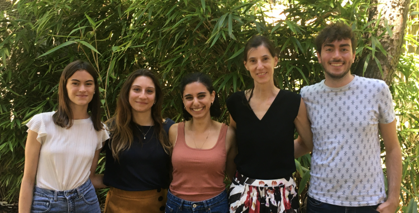Research Explained: Comparing Two Neurodevelopmental Disorders Linked to CK2: Okur-Chung Neurodevelopmental Syndrome and Poirier-Bienvenu Neurodevelopmental Syndrome—Two Sides of the Same Coin?

Authors : Demetra Ballardin, Jose M. Cruz-Gamero, Thierry Bienvenu and Heike Rebholz
Publication Review Explained By : Demetra Ballardin, Barbara Lecis Cocco, Jose Cruz-Gamero and Heike Rebholz
Publication Review Explained Summary :
OCNDS and POBINDS are two neurodevelopmental disorders that are caused by alterations in two genes that encode the blueprint of two different components of a protein called CK2. CK2 consists of two parts, a regulatory subunit that is termed CK2beta and the catalytic one that performs a biochemical reaction in our bodies, termed CK2alpha. OCNDS is caused by an alteration in the gene for CK2alpha, and POBINDS by alterations in the gene CK2beta. The two conditions are similar in many aspects, but also have differences, and in the literature thus far were never directly compared. With our review, we wanted to bring together patients’ data from both disorders in order to compare their symptoms and, via a literature survey, try to reason how known cellular function of CK2 could explain common and specific symptoms of both syndromes.
It is not surprising that we observed that OCNDS and POBINDS patients share many symptoms, including growth deficits, neurological and behavioral problems. However, the syndromes also present important differences: OCNDS patients achieve their developmental milestones (onset of speech and walking) much later and have a higher prevalence of intellectual disabilities and stereotyped movements than POBINDS patients. However, POBINDS patients suffer more often from epilepsy, and this includes a high prevalence of generalized tonic clonic seizures that are often difficult to manage pharmacologically. OCNDS patients do not suffer from generalized tonic clonic seizures, but other, milder forms of seizures. Moreover, OCNDS patients present sleep disturbances and gastrointestinal issues that were not reported by POBINDS patients.
We also tried to link certain symptoms such the loss of muscle tone and behavioral symptoms to known roles that CK2 plays in our brain, highlighting interesting processes that will be further studied to better understand OCNDS and POBINDS, and that could be the focus of therapeutic approaches. Studies using patients’ cells, mouse models and other models systems of the conditions will help to understand, on a molecular level, the similarities and the important differences between OCNDS and POBINDS.
